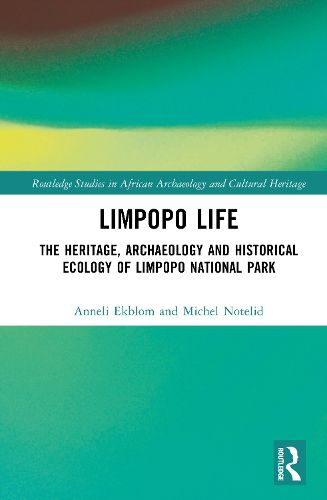Readings Newsletter
Become a Readings Member to make your shopping experience even easier.
Sign in or sign up for free!
You’re not far away from qualifying for FREE standard shipping within Australia
You’ve qualified for FREE standard shipping within Australia
The cart is loading…






Limpopo Life introduces the reader to the material culture, oral histories, and the negotiation of conservation and landscape in an area now known as Limpopo National Park.
Introducing the archaeology of a region that has not been surveyed or discussed, this book connects to the archaeology, history, heritage and conservation discussions in the southern African region as a whole. Vegetation history and paleoecology are combined with archaeological surveys and excavations, written sources, oral histories and travelogues to draw a picture of the diverse landscape of the Limpopo region. Intermixed within this narrative are sections that focus on an individual species, a life history, or an event providing a view of the complex and dynamic interactions. The role of humans in this diverse environment and how they have co-evolved with other species, shaping each other's destinies in a consequential and accidental way, is outlined.
This book will be of interest to researchers and students interested in the archaeology, heritage and conservation of Mozambique, Zimbabwe and northern South Africa. It will also be of relevance to readers interested in the social history of the Limpopo and Kruger National Parks and this cross-border area.
$9.00 standard shipping within Australia
FREE standard shipping within Australia for orders over $100.00
Express & International shipping calculated at checkout
Limpopo Life introduces the reader to the material culture, oral histories, and the negotiation of conservation and landscape in an area now known as Limpopo National Park.
Introducing the archaeology of a region that has not been surveyed or discussed, this book connects to the archaeology, history, heritage and conservation discussions in the southern African region as a whole. Vegetation history and paleoecology are combined with archaeological surveys and excavations, written sources, oral histories and travelogues to draw a picture of the diverse landscape of the Limpopo region. Intermixed within this narrative are sections that focus on an individual species, a life history, or an event providing a view of the complex and dynamic interactions. The role of humans in this diverse environment and how they have co-evolved with other species, shaping each other's destinies in a consequential and accidental way, is outlined.
This book will be of interest to researchers and students interested in the archaeology, heritage and conservation of Mozambique, Zimbabwe and northern South Africa. It will also be of relevance to readers interested in the social history of the Limpopo and Kruger National Parks and this cross-border area.